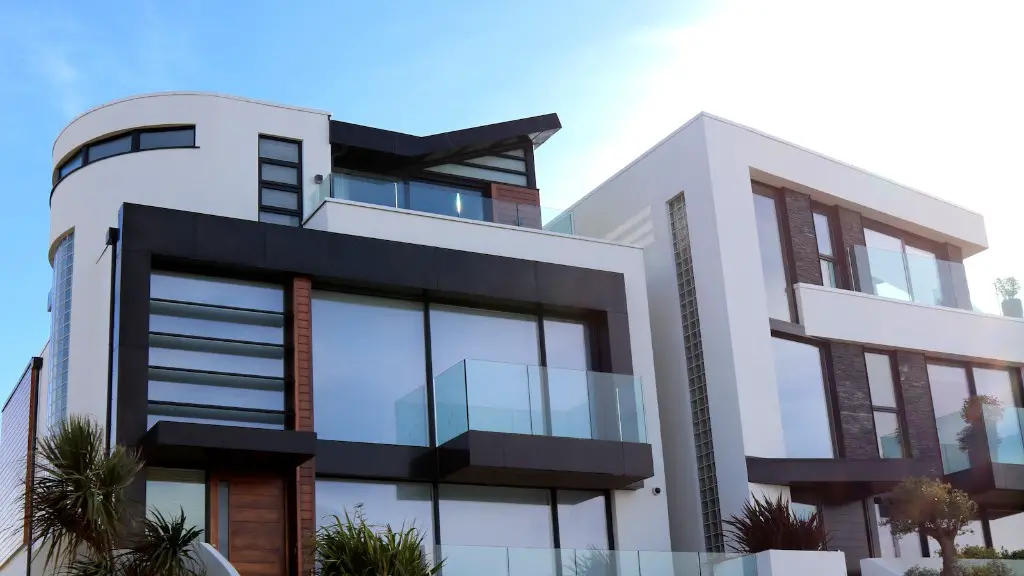The Role of Architects In Sustainable Development
The word ‘architecture’ is evocative of grandeur and structural beauty that captivates even the most unassuming of on-lookers. It is an art form that presents itself differently to different people; however, the importance of architecture should not be overlooked, particularly in terms of sustainability. Architectural demands must rise in the upcoming years in order to meet the required standards of a sustainable future.
This importance begins with the basics as the architecture of a building, location and insulation all need to be carefully considered in order to obtain the highest level of sustainability. Construction has a large influence on the environment and with the population continuously growing, architects must ensure that resources are used responsibly. Innovative technologies are being carefully applied in order to produce higher-grade solutions for all.
In reality, architecture is barely mentioned in sustainability discussions. Architects must be seen to be taking the initiative, working alongside engineers, local authorities and the community in order to discover the most efficient routes for sustainable development. Architects need to conclude that the more natural, organic forms of design and construction, the better, as this will enable a reduction in energy consumption and an enhanced quality of life.
In recent years, the main focus has been climate change, waste management and energy resources. Architects are now expected to present a design solution that is a reflection of both aesthetics and efficiency. Architects have an important role in preserving water with the use of rainwater harvesting, water recycling and rain gardens. Furthermore, for countries that lack reliable infrastructure for power, sustainable architecture can provide alternative solutions in the form of solar and wind, as well as efficient LED lighting.
On the other hand, the challenge is to invent design alternatives that offer long term solutions, while remaining cost effective and creative. Architects must consider the longevity of a building in terms of energy consumption, materials used and construction life-cycles. Ultimately, this means an increased demand for experienced professionals who are dedicated to producing structures that serve the environment and society.
Impact of Advanced Technology on Architecture
Advanced technology has had a major impact on the field of architecture. There is an increased reliance on computers and automated processes to help generate designs, models and 3D renderings. Architects are now exploring BIM (building information modelling) to plan and design spaces in a more efficient way and with less wastage.
New materials, like cross-laminated timber, are now being adopted more widely, making the building process quicker and more efficient. This is not only beneficial for the environment, but also for the architectural profession, in terms of increased speed of delivery, less communication errors and a decrease in construction costs.
The advancements within the digital world also affects the way architects and clients communicate. The internet allows architects to share their visions with clients and industry peers, with the aid of digital drawings, designs and visualisations. Social media channels also present opportunities for connecting with potential clients or collaborators.
The Growing Demand for Architects
Ultimately, there will be a ‘boom’ in architecture, as sustainable solutions become more of a necessity than a ‘luxury’; this will bring the years-long demand up to the standard that’s needed to be met in order to achieve sustainable objectives.
Developed countries are leading the way in terms of sustainable architecture, but the rest of the world is catching up. It’s predicted that the demand for sustainable architectural solutions will rise significantly in the near future as other nations aim to become more efficient and invest in green-friendly buildings and infrastructure.
In the European Union, for example, the average yearly growth rate for architects has been statistically higher than 7%, and there are predictions that this growth rate will continue in the future. As the world awaits more from sustainable architecture, those with the skills, knowledge and expertise to meet the demand will be highly sought after.
Training to Become an Architect
Becoming an architect is by no means an easy task and education and training needs to be carried out. Architectural schools and universities encourage intellectual thinking, creativity and research. Students are expected to have an eye for detail, an understanding of form and space, as well as an aptitude for problem-solving and critical thinking.
The courses are specifically designed to develop the creative mind, while teaching basic principles of architecture and design. In the final year of training, many students will typically take an internship, allowing them to align their creative learnings with professional practice.
At the end of the course, architects will be expected to prove their knowledge, skills and aptitude with a professional examination. After passing the exam, they can call themselves registered architects and will be legally allowed to practice in their particular country.
The Challenges Facing Architects
From a business perspective, architects face a lot of competition, making it difficult to pitch ideas to potential clients. It’s because of this that it’s important for those in the industry to showcase their talents, expertise and experience to potential clients. Without this, architects would be unable to work on larger scale projects or on projects for particular clients.
The best way to stand out from competition is to develop strong relationships, network and build an online presence. Inventiveness is also key, as creativity, individuality and the ability to think beyond the traditional methods of architecture and design is what wins projects and brings the most success to an architect’s portfolio.
Impact of Globalisation on Architecture
Globalisation has both positive and negative a impacts when it comes to the architectural profession. The work of architects today is increasingly global as projects and ideas are often shared between countries, cultures and clients. However, this means a reduction in local jobs, while competitive wages and economic uncertainty in the long term remain large conversations in the architectural world.
Globalisation has also had an interesting impact on architectural forms and styles, as ideas are freely shared and collective thoughts are merged to form more unique and hybrid designs. In the meantime, clients from different countries can access regional ideas, trends and styles and question the influence of different cultures on which the project remains dependent.
Despite any impacts that arise from globalisation, it is clear to see that in order to have a better future, architecture and urbanisation must become more sustainable. This can only be achieved if there is continued collaboration between architects, engineers, designers and other industry specialists, in order to develop more advanced ideas and discover the best solutions to keep global environments safe and healthy.
Green Architecture & Building
Green architecture is an initiative taken by the construction industry to counter the negative effects of traditional construction upon our environment and society.
It is comprised of many things, from the sourcing of materials and fabrication processes to the green treatments used for buildings. Green architecture involves the utilisation of locally-sourced materials and the development of eco-friendly products. It also includes the installation of solar panels for energy supply, and the planting of green areas in urban spaces to reduce air pollution.
Traditional materials, such as brick and steel, just don’t compare to the green-friendly, energy-saving algorithms that modern technology has allowed us to use today. Today’s materials are more sustainable and cost effective, making them idea, in the long run, for all sorts of projects.
The positive message of green architecture is shared by many cutting-edge entrepreneurs, whose businesses value pioneering concepts and the utilisation of technology to enhance the way we start to view architecture.
How to Promote Sustainability in Architecture
Architects have a duty to recognise their role in society and utilise their knowledge to bring sustainable solutions to construction.
The best way to promote this sustainability is by teaching its importance in schools and universities, and amongst the general public. The dissemination of information about sustainable construction should be targeted towards those that don’t have a strong understanding of the issue of sustainability.
It’s also important to promote the strength and efficiency of sustainable construction in projects. Sustainable modern architecture can offer high-quality aesthetics and benefits to communities if used effectively. Architects should be aware of their potential to influence public perception, and use this to promote the development of future sustainable projects.
Another avenue for promotion is the local sustainability hubs that are used as venues to inform and gain insight into the challenges and solutions being presented. Here, architects can both observe the current happenings and contribute to the world of sustainability.
Recognition & Awards
One way in which architects can promote sustainability is by applying for awards; any successful entry is recognised on a worldwide scale, regional and local platforms, furthering the message of sustainability in architecture.
The Green Building Awards, for example, is a constantly evolving platform to identify and recognise sustainability. There are also many other green architecture awards, such as the European Green Building Award, and the International Architecture Awards in the USA.
By becoming a part of these awards, architects can demonstrate their commitment to sustainable development and help promote their works, as well as receiving recognition for their achievements.
Conclusion
It’s clear to see that architecture has an unavoidable role to play in the world of sustainability, and this role is only set to increase in the future. With materials, technologies and regulations all helping in the transition to sustainability, architects are ready to deliver the solutions that the world needs.
Education and training programmes, greater recognition and awards, and the improvements in digital communications all contribute to the growing demand for architects and their unique skillsets. With the ability to design and create aesthetically pleasing, yet highly efficient and sustainable structures, architects are an important part of a sustainable future.


